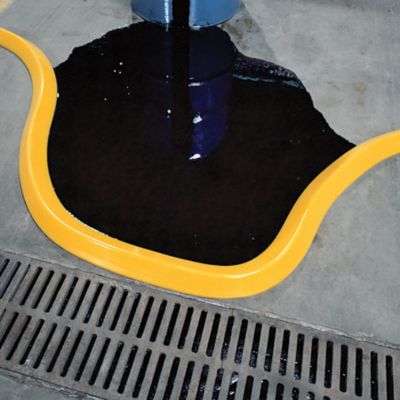During climactic scenes of action movies, heroes often run into a burning building or other hazardous situation to rescue someone or something. Pieces

On Hollywood movie sets, scenes are carefully planned and every action is rehearsed and perfected. In many cases, stunt doubles that have been specially trained to perform hazardous scenes are used in place of well-known actors to ensure that risks are minimised.
In real life, there are no stunt doubles or second takes. Rushing into a hazardous situation is often dangerous, even fatal. That’s why it is essential for employees to be able to recognise hazards and risks, and trained not to rush into a situation – even if they see an injured friend or co-worker in the hazard area.
Overcoming natural instincts
When a child falls, a mother’s natural instinct is to rush to the child, pick him up and comfort him. Trained medical personnel will tell you that this is the worst thing that you can do unless of course the child is in harm’s way and needs to be moved to prevent further injury. It is far better to let the child lay where he has fallen and determine the extent of injuries before moving him.
Contrast this instinct with what happens during sporting events: when an athlete goes down, the athletic trainers and medical technicians go to the athlete, but because they have been trained, they do not move him until they have determined what is wrong and how he can be safely transported so that there is no further injury. Sometimes this can take a while, but the technicians know that the time spent in determining the extent of the injury as well as the safest method of transporting the athlete before he is moved is essential to preventing further injury.
Workers who become aware of spills need to be trained to take similar precautions. While it is often impractical to train everyone at a facility to be a designated spill responder, all employees need to be aware of what to do when they see a spill.
Stop, look and listen
Children are sometimes taught to “stop, look and listen” as a safety precaution for crossing the street. The same maxim can be applied in spill response. At a minimum, train all employees to:
- STOP – Never walk through, taste or touch a spill. In addition, never rush into a spill area to help a worker who is injured or unconscious. If there is an unfamiliar smell in the air, don’t venture in to find the source.
- LOOK – How big is the spill? Can the source of the spill be located? Has a tank or container leaked? What equipment is in the spill area? Is the spill headed for drains or other sensitive areas?
- LISTEN – Are there any unusual sounds, such as a feed line that has burst or a pressure valve that has released?
Training is critical
After taking a moment to observe the situation, train workers on what they should do next. Should they pull an alarm? Alert a supervisor? Put up barricade tape? Determining what steps are to be taken, and training workers on their specific role in spill response will help keep all employees safe, and help ensure that the appropriate actions are taken by those who are trained to handle the situation.
Even for office workers who some would say are “not likely” to ever see a spill, training is important. Their only action may be to leave the building and walk to a designated area when they hear an announcement over the intercom. However, unless they are trained on which exit route to take, where the designated meeting area is, and whom they need to report to once they are there, chaos could ensue in an actual emergency.
Employees who regularly work in spill prone areas should receive a more in-depth training than just noting the location’s nearest exit. This training may include:
- Taking defensive actions, such as surrounding the spill area with absorbents or dikes
- Emergency shutdown procedures
- Looking for fire hazards
- Identifying containers or tanks by UN number, placards or other markings
- First aid, CPR and defibrillator training
Assuming the worst
When the nature of the spill cannot be determined, assume that the puddle – or lake – is the worst thing that could possibly have spilled at the facility. This means that if the nastiest chemical at the facility is used oil, responders probably don’t need fully encapsulated suits and supplied air respirators. The colour of the spill, its location or a penetrating smell may help in making the determination.
When preparing spill plans and training on-site responders, use Safety Data Sheets (SDS) to determine what hazards are present at the facility, and what precautions may need to be taken. SDS can help determine, among other things:
- What materials are actually on-site and need to be accounted for
- If the spill needs to be handled very quickly to prevent further hazards
- If the facility should be evacuated to avoid inhalation of noxious fumes
- Any health hazards
- Any fire or explosion risks
- Whether the spill will react with other materials
If the contents of a spill cannot be determined, instruments such as gas detectors, pH paper, etc., can be used – after responders are properly protected, of course – to help determine what the spill may actually be.
Putting it together
Taking the time to determine the full extent of spill risks at a facility is a noble achievement, but if no one knows what to do during an emergency, these efforts have been wasted. If, for example, vapours from the spill are an inhalation hazard, precious time could be spent looking for people who have safely made it to an accumulation point and just haven’t checked in – or worse, people could have remained in the building and dismissed warning sirens or announcements as “just another drill.”
Planning and training everyone to know exactly what to do in a spill emergency will help keep everyone safe, and help speed response efforts by ensuring that life safety needs have been met prior to mitigation of a spill. Although environmental fines can be great if spills enter the environment, loss of life would be a worse tragedy. Drills may interrupt the daily workflow, but they are an effective way to ensure and promote overall safety.
Find out more:
New Pig provide a comprehensive range of spill response products from our online shop www.newpig.co.uk. Or why not give us a call on 0800 919 900.






COMMENTS